The Boston Terrier and Pug are amongst the most popular breeds in the United States, and one look at both dogs will explain why. These smaller dog breeds have sweet, friendly natures with some incredibly cute faces.
Are you considering buying or adopting a Boston Terrier or a Pug? If so, you will want to know about both the similarities and differences between these dogs, so you can select the one that best fits with your family and living situation. Let’s examine how the Boston Terrier and the Pug differ from each other.

Breed Histories
The history of the Boston Terrier and Pug are remarkably different from each other. Both in terms of their reason for being and where the respective breeds originated. Here is a brief historical background on each breed’s story.
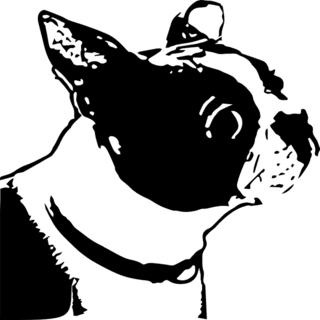
The Boston Terrier
The Boston Terrier is America’s Dog and the official state dog of Massachusetts. Founded in the late 1800s in Boston, Massachusetts, this breed is wholly an American one. Robert C, Cooper, a Bostonian, bought a dog from William O’Brien.
Judge
The dog, named Judge, was a cross between an English Bulldog and a white English Terrier, and Judge was brought from England to American by O’Brien. Judge weighed in at a solid 32 pounds, and he had stunning dark brindle fur with a broad white blaze on his face. The dog’s head was square and shaped like a block, and he possessed an even, gentle mouth. Judge is universally accepted as the ancestor of all modern Boston Terriers.
Burnett’s Gap
Cooper bred Judge to Burnett’s Gap, a white dog owned by Edward Burnett. Better known as Kate, the female bulldog was white with a stocky build and a similarly square head. The result of this breeding led to the creation of the Boston Terrier known and loved today.
Wells Eph
The male dog born to Kate and Judge had the traits that the Boston Terrier is praised for worldwide: kindness and gentleness. Kate and Judge’s offspring, named Well’s Eph, was then bred with Tobin’s Kate, and their offspring were crossed with the French Bulldog. That final mixed breeding led to the foundation of the Boston Terrier breed.
Naming the Boston Terrier
Surprisingly, the Boston Terrier was not given that name at first. There was quite a bit of argument and wrangling over what to call the breed, and titles ranged from bullheads to round heads, to American terriers and Boston bulldogs. Finally, in 1889, a group of owners formed the American Bull Terrier Club.
They decided to call the breed Bull Terriers, but back down in the face of widespread opposition from breed fanciers. To please their base, the club renamed itself the Boston Terrier Club, giving recognition to the birthplace of the breed. By 1893, the American Kennel Club officially recognized the breed, and the Boston Terrier’s place in history was solidified.
Creation of the Boston Standard
During the early 1900s, some inconsistency existed within breed standards, but by 1915, the black-and-white Boston terrier was determined to be the ideal breed type. Since that point in time, the Boston Terrier has been one of the most popular dogs in America, not only for his dapper appearance and soulful eyes, but more so for his unfailing loyalty, devotion, and love for his family.

The Pug
The short-nosed Pug is considered to be one of the oldest dog breeds in the world. Records of dogs matching the description of the Pug are documented in ancient Chinese papers around 700B.C. as part of the Han dynasty. The Pug was a dog bred and owned only by Chinese emperors. Historians believe there was an ancient law forbidding anyone from owning a Pug aside from the emperor unless the emperor had specifically gifted a dog to that individual.
Ownership of Pugs outside of royalty was punishable by death. Royal Pugs lived quite the glorified lifestyle; they had their own room and servants, were treated with the highest respect, and were guarded at all times by soldiers.
Emperor Ling (168 – 190 A.D.) was so enamored of his Pugs that he assigned them the same rank as his wives. Ling insisted that his Pugs receive the best rice and meat.
Origins
The exact origin of the Pug is a mystery. Some people believe the small dog to be a descendant of the much larger Tibetan Mastiff. Others argue the Pug is relative to the Chiang-sze, a little, short-haired dog with a flat nose and curled tail on its back called the Ha-Pa. By the late 1500s, China was trading with European countries. Legend has it some Dutch traders fell in love with the cute little dogs and smuggled them onto their ships to take back home. They called the breed the Mopshond, and as soon as the Pug was introduced to Europe, the breed’s popularity soared.
The Aristocrat
Like his ties to Chinese royalty, the Pug became a favorite amongst the royal houses of Europe. The Pug became the official dog of the House of Orange in Holland after a Pug reportedly saved the life of William, Prince of Orange, by barking a warning that Spaniards were about to attack in 1572. When William of Orange (later William III) and his wife Mary went to England to fight James II for the throne, they brought their Pugs with them.
Other famous royal Pugs include Mops, owned by a teenage Marie Antoinette, and Fortune, a Pug belonging to Josephine Bonaparte, wife to Napoleon. Queen Victoria of England helped advance the popularity of the breed during the Victorian era.
Pugs in America
Pugs were not introduced to America until the end of the Civil War. The American Kennel Club formally recognized the breed in 1885, but by the turn of the century, the little dog’s popularity began to fade. A few lucky rolls in Hollywood movies in the late 1990s sparked public interest in the breed again, and today, the Pug is once again a favored breed.
Breed Features
The Boston Terrier and the Pug may sometimes be mistaken for one another, mainly because they are smaller breed dogs with short noses. Otherwise, these breeds have their distinctions in their body structures, coat styles, and coat colors.
The Boston Terrier’s Features
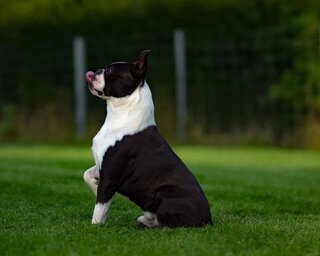
Body
Always the “American gentleman,” the Boston Terrier is a handsome, solidly built dog with small, upright, bat-shaped ears. With a flat, square head and a short, broad muzzle, the Boston Terrier’s bulldog ancestry can still be seen in his physique. This breed has a full, barreled chest, a boxy body shape, and a gently arched neckline. The Boston Terrier’s tail is typically straight and short, although some dogs may have a tail shaped like a corkscrew. The breed’s standout feature is his large, expressive, dark eyes that reflect his loving, loyal nature.
The Boston Terrier is a brachycephalic breed, meaning his nose is remarkably short, making his face looked flattened or pushed inward. This distinctive look is part of the breed’s charm but may also lead to health problems.
Size
There are three different groups of Boston Terriers determined by their weight class: the 20-25lb group, the 15-under 20lb group, and the under 15-lb group. Males can grow to be 17 inches tall, and females can clock in at 16 inches in height.
Coat Colors and Care
The Boston Terrier’s coat is smooth, clean, and fine-haired. This breed can be any of three colors: seal (reddish-black), black, or brindle. Every Boston Terrier should have an all-white muzzle, a matching blaze down the center of the face, and a white chest. These markings are the reason why the breed is often described as “wearing a tuxedo.” Purebred Boston Terriers do not exist in any other colors.
This breed’s coat is easy to care for and groom. Weekly brushing and baths when needed are as far as coat care goes for this relatively low-maintenance breed. Due to his prominent eyes, the Boston Terrier’s face should be washed daily, and his eyes checked regularly for signs of redness, irritation, or infection.
The Pug’s Features
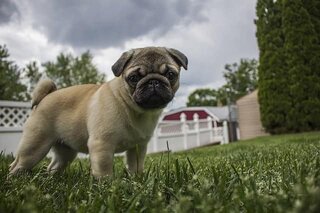
Body
Although the ancient Pug was depicted as long and lean, the modern breed is anything but those traits. The contemporary Pug is a compact, chubby, squarely-muscled, and proportioned dog. He moves with a robust and confident gait and typically rolls his hips when walking. This breed has a large and round head, a deep chest, as well as legs that are strong, short, straight, stubby, and set well under the body. The Pug’s shoulders are moderately laid back while their ankles are strong, and feet are small. The dog’s tail should be tightly curled up and over the hip.
Like the Boston Terrier, the Pug is a brachycephalic breed with a short snout that gives his face a pushed-in look. The Pug’s lower teeth typically protrude further than the upper teeth, resulting in an underbite that may look adorable but which can lead to medical problems.
Unique Characteristics
Perhaps one of the Pug’s most distinctive features is the large wrinkles on his head and neck. Bred into the Pug by the Chinese, these wrinkles on the dog’s forehead are said to resemble the Chinese character for “prince.” The other standout feature in this dog is his large, dark, protuberant eyes. Bold and globular in shape, the Pug’s eyes are expressive and attentive.
Pugs have two ear shapes, the “button” and the “rose.” Button ears are semi-erect while rose ears fold over and back against the head. Breed standards favor button-eared Pugs.
Size
Male and female pugs can weigh anywhere between 14 and 18 pounds. Both genders are typically 10 to 14 inches tall at the shoulder.
Coat Colors and Care
Despite their short coats, Pugs are a double-coated breed. The Pug coat is smooth and short, but due to that double-coat, the Pug sheds tremendous amounts of hair, especially in the summer. Regular brushing and grooming, accompanied by monthly baths, can keep shedding conditions under control.
Pugs are found in two coat colors, black and fawn-colored. Fawn-colored Pugs may have different colored highlights in their fur, including silver and apricot. All Pugs have short, black muzzles.
Breed Health Concerns
As brachycephalic breeds, the Boston Terrier and the Pug share some common medical concerns. The first commonality is brachycephalic syndrome is these short-snouted breeds have trouble breathing due to blocked or constricted airways. This syndrome makes it near impossible for either the Pug or the Boston Terrier to be out in extremely hot or cold temperatures. Dogs with the brachycephalic syndrome are also more prone to developing environmental allergies.
Aside from brachycephalic syndrome, the breeds differ substantially on other medical issues.
Boston Terrier Health Concerns

Megaesophagus
Megaesophagus is a genetic defect esophagus’ structure that causes a Boston Terrier to regurgitate undigested food. Without treatment, damage can be done to the lining of the throat due to continued exposure to bile and digestive juices.
Cataracts
Cataracts are a common health problem for Boston Terriers and can develop as juvenile or adult versions. Cataracts cast a cloudy film over the eye lens, limiting the dog’s vision.
Heart murmurs
Heart murmurs are a genetic disorder that happens when the mitral valve of the heart results in a buildup of blood in the left atrium. The dog’s heart cannot perform efficiently when heart murmurs occur. This condition can be successfully treated with lifestyle and dietary changes.
Cherry eye
Cherry eye is a disease that happens when the gland of a Boston Terrier’s third eyelid prolapses. This condition occurs most frequently with dogs under a year in age. Repositioning the gland or removing it through surgery are viable options for addressing this disease.
Reverse sneezing
Reverse sneezing can happen to a Boston Terrier at any age. If a dog becomes overexcited, has an environmental allergic reaction, or gulps his food down quickly, he may have a fit of reverse sneezing. During this event, nasal secretions fall onto the soft palate, causing a closing of the windpipe. This closure results in a wheezing sound. The windpipe will reopen quickly, especially if the dog remains calm during the attack.
Deafness
Deafness can occur on one or both of a Boston Terrier’s ears. Terriers who have white on more than one-third of their heads are more likely to give birth to deaf puppies.
Pug Health Concerns
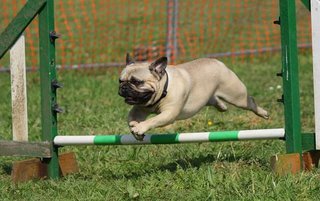
Hemivertebrae
Hemivertebrae occurs when one or more vertebrae are malformed, causing them to be shaped like a triangle. Short-nosed breeds like the Pug are more susceptible to developing these deformities, and the impact depends on how many vertebrae are affected.
If only a few vertebrae are impacted, the Pug may lead a normal life. If multiple vertebrae are involved, the Pug will have difficulty walking, will stagger, and display an uncoordinated and weak gait. The condition can become progressively worse, leading to paralysis. In some cases, surgery can alleviate these symptoms.
Yeast infections
Yeast infections often crop up in Pugs because of their wrinkled skin. When moisture gets caught between the wrinkles, bacteria can breed and infections develop. Look for blackened, itchy skin, and a strong odor that may indicate the presence of a yeast infection. The most common areas for infection to appear are the neck, inner ear, armpits, groin, and feet. Your veterinarian can give your Pug medication to resolve this issue.
Demodectic mange
Demodectic mange may rear its ugly head if your Pug has a weakened or compromised immune system. Every dog carries Demodex mites on him; these mites live in hair follicles and are typically harmless. However, a sick Pug has opened his body to infection, and those mites can suddenly become a huge medical headache. Skin inflammations and allergic reactions will happen, including patches of sore, reddened, scaly skin, and hair loss on the legs, neck, and head. Your veterinarian can recommend medical products to clear up your Pug’s mange infestation.
Pug Dog Encephalitis
Pug Dog Encephalitis (PDE) is a fatal inflammatory brain disease that only occurs in Pugs. There is no cure for this disease and no way to diagnose a Pug with it while the dog lives. A definite diagnosis can only happen by testing the brain tissue after death. PDE generally strikes young dogs, and its known symptoms include circling, seizures, blindness, and coma.
Researchers suspect that PDE has a genetic link, and further research will hopefully shed more light on this mysterious disease.
Nerve degeneration
Nerve degeneration impacts older Pugs who, when suffering from this condition. Signs of nerve degeneration is dragging their hind end on the ground, stagger, experience hind end weakness, or become incontinent. Nerve degeneration is a condition that gradually worsens, and there is no cure. Some Pug owners purchase small wheelchairs for their Pugs, especially as the front legs are untouched by this illness.
Corneal ulcers
Corneal ulcers can occur in Pugs because of their prominent, large, bulging eyes. Those eyes can quickly become injured, leading to the development of ulcers on the cornea. This condition typically responds well to medication but must be treated immediately. Untreated ulcers can cause blindness or even eye ruptures.
Breed Personalities
There’s a good reason why the Boston Terrier and Pug are popular breeds in America: their endearing personalities. Both breeds are adorable, but it’s that particular gusto in their movements and the sparkle in their expressive eyes that captures the hearts of their fans. What are the differences in nature between these two breeds?
The Boston Terrier’s Nature
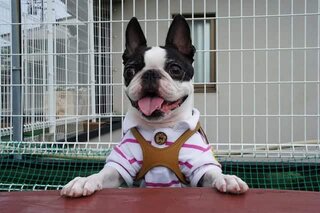
Fondly nicknamed the “American gentleman,” the Boston Terrier is beloved precisely because of his loveable personality. Although the breed draws its origins from the English Bulldog, a breed created for bullfighting, the modern Boston Terrier is far more a lover than a fighter. With his keen intelligence and love for performance, the Boston Terrier knows how to keep his family entertained.
Boston’s may be loyal to his family, but he also remains faithful to his self. This breed embraces his nature fully; some dogs will be active and lively, while others will be dignified and serene. Some Boston Terriers are a mix of all these characteristics, but when that distinctive personality shines through, be prepared to lose your heart to this dog. This breed can indeed be stubborn at times, especially when being trained. Boston Terriers are bright and eager to please his owner above all else, even with some mischief-making. Through positive training, reinforcement, and consistency, a Boston Terrier will learn what you are teaching him in no time.
Living with a Boston
Boston’s are a sensitive breed of dog who is closely attuned to his owner’s mood. The Boston Terrier is thoroughly devoted to his family, and although he may latch onto one person more than any others, the breed is non-aggressive and friendly, even with strangers. Watchdog duties are treated with seriousness by the Boston Terrier, and he will alert you when a stranger is at the door. The breed is a winner with children of all ages and tends to get along quite well with other household pets.
Because he is on the smaller size, the Boston Terrier is the right size for any living environment, especially tinier spaces like apartments and condominiums.
The Pug’s Nature
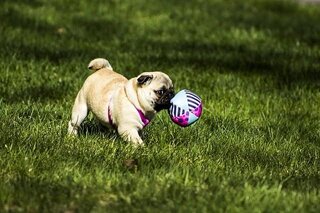
Clowns at heart, but dignified clowns at that, the Pug is a playful toy breed who enjoys a short game of fetch in the yard. But Pug’s really love to curl up in your lap on the couch at night. Pugs are deeply bonded to their owners and can suffer from separation anxiety if they are left alone for long periods. This breed loves to be in the spotlight and will do what he can to be the center of your attention.
Personality
In terms of nature, the Pug is known for being affectionate and charming, with a dash of mischievousness thrown in the mix. Although he is not overly social, the Pug can easily balance both a serious attitude and a dry sense of humor. In training, the Pug can be resistant and challenging to work with at first. The breed is highly intelligent and almost equally stubborn. Generally, a Pug’s eagerness to please his owner wins out over individualism, but firm, consistent, positive training techniques can teach your Pug what you want from him very quickly.
Living with a Pug
Pugs are good watchdogs, but they are not overly barky or yappy. Their small size makes them a great breed choice for apartment-dwellers or people who live in small homes and condos.
Despite their small size, the Pug is a tough, hardy breed suitable for living with children of all ages. Pugs love kids and make for a great family dog. This breed can also coexist peacefully with dogs, cats, and other household animals with proper socialization, training, and supervision.
Choose Your Breed
The Boston Terrier and Pug are two equally favorite breeds because they are affectionate, devoted, and charming. However, both breeds have their individual histories, and, like their unique personalities, that background and breed development makes them different from one another. Despite those differences, these two breeds are favorites for a good reason, and whichever breed you choose, you will have a loving, dedicated, loyal companion at your side for many years to come.
Which dog do you prefer more? A Boston or Pug? Please leave a comment below.
References
- Boston Terrier Club of America – Boston Terrier History
- Hill’s Pets – All About Brachycephalic Dogs
- Dogtime – Boston Terrier
- Your Pure Puppy – Boston Terriers “What’s good about ’em.”
- PugWorld – Pug History
- Dogtime – Pug
- AKC – 10 Things You Didn’t Know About Pugs
- United Canine Association – Pug Breed Information